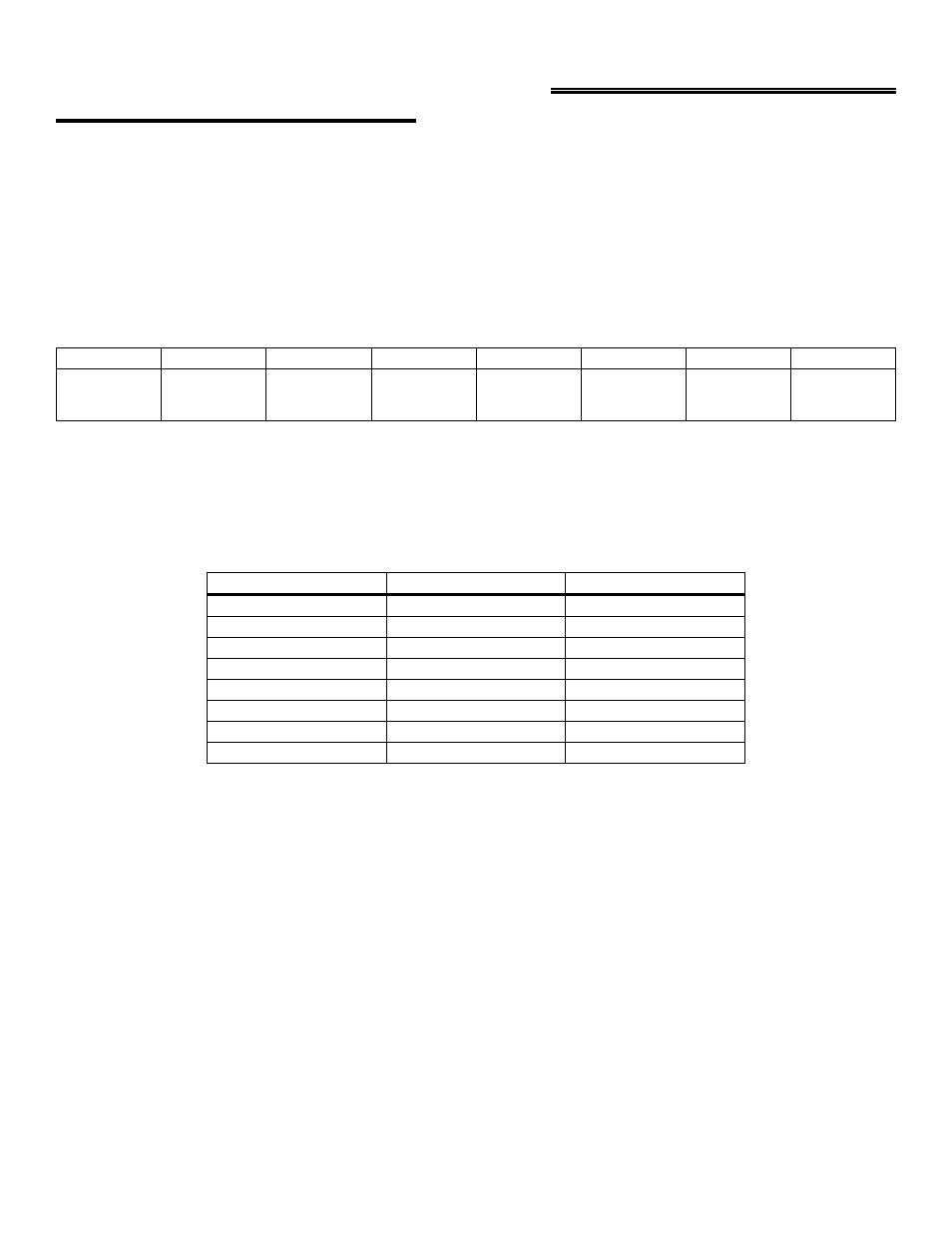Measurement Computing CIO-DAS16Jr/16 User Manual
Page 15

3 REGISTER ARCHITECTURE
3.1 CONTROL & DATA REGISTERS
The CIO-DAS16Jr/16 is controlled and monitored by writing to and reading from 16 consecutive 8-bit I/O addresses.
The first address, or BASE ADDRESS, is determined by setting a bank of switches on the board.
Most often, register manipulation is best left to experienced programmers with a specific need for low level control. If
this is the case for you, use the information that follows to write your own code. Otherwise, we strongly suggest you
consider using the Universal Library™ instead.
The register descriptions follow all follow the format:
A/D16
LSB
A/D15
A/D14
A/D13
A/D12
A/D11
A/D10
A/D9
0
1
2
3
4
5
6
7
Where the numbers along the top row are the bit positions within the 8-bit byte and the numbers and symbols in the
bottom row are the functions associated with that bit.
To write to or read from a register in decimal or hexadecimal, the weights in Table 3-1 apply:
Table 3-1. Bit Weights
80
128
7
40
64
6
20
32
5
10
16
4
8
8
3
4
4
2
2
2
1
1
1
0
HEX VALUE
DECIMAL VALUE
BIT POSITION
To write control or data to a register, the individual bits must be set to 0 or 1 then combined to form a Byte. Data read
from registers must be analyzed to determine which bits are on or off.
The method of programming required to set/read bits from bytes is beyond the scope of this manual. It will be covered in
most Introduction To Programming books, available from a book store.
In summary form, board registers and their function are listed in Table 3-2. Within each register are eight bits which can
constitute a byte of data or can be eight individual bit set/read functions.
11
